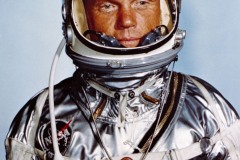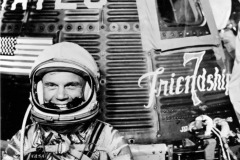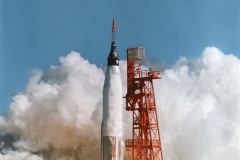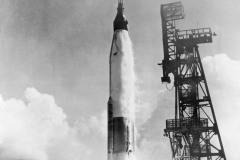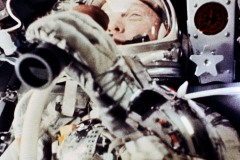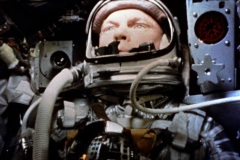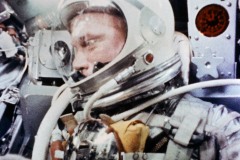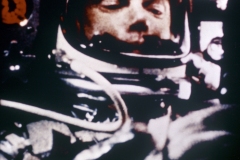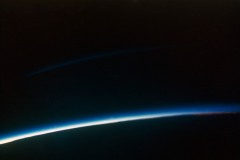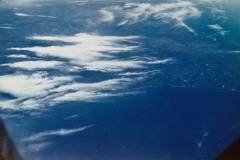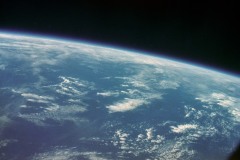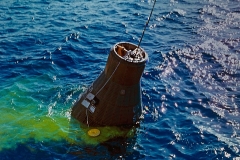The flight was initially scheduled for January 27, 1962, but had to be postponed several times because overcast skies did not allow the takeoff to be filmed. Additionally, a broken tank required major repairs.
Mercury-Atlas 6 was finally launched on February 20, 1962, with Friendship 7 reaching orbit ten minutes later.
During the second orbit, the landing capsule signaled that the heat shield was no longer seated correctly. If this reading was true, Friendship 7 would burn up upon reentry. The control center therefore decided that the braking rockets would not be released as usual after ignition. This was intended to hold the loose heat shield in position until it was pressed down by the increasing air pressure.
After the flight, inspection of the space capsule revealed that a defective microswitch had triggered the “Landing Bag Deployed” signal. So the heat shield was not loose. The landing bag was an air bag with many small holes between the heat shield and the capsule, which had the purpose of cushioning the impact of the capsule on the water surface. Once the landing bag was deployed, which usually only happened after the parachute was opened, the heat shield would just dangle loosely from the bottom of the airbag instead of being firmly attached to the capsule as intended for orbital flight and reentry.
Glenn was irritated that the condition of his space capsule had initially been kept secret from him. He was of the opinion that the astronaut should always have all information about his vehicle, even in the event that radio contact with Earth is lost. However, flight director Chris Kraft countered that if the heat shield had actually been loose, there was nothing Glenn could have done anyway.
During the descent, the Friendship 7 oscillated heavily and the fuel for attitude control was completely used up. However, the auxiliary parachute deployed earlier than planned and stabilized the landing capsule.
Since Friendship 7 ended up being lighter than planned, the calculated landing point was missed by 60 kilometers. The destroyer USS Noa hoisted the landing capsule with the astronaut on board. Glenn blew open the access hatch and sustained a small injury to his hand. Glenn was immediately medically examined but showed no symptoms other than fatigue and thirst.
With this fully-fledged manned space flight, the USA caught up with the Soviet Union, which, however, led in terms of the number and duration of space flights. Glenn was hailed as a hero. With this flight the objectives of the Mercury program were fulfilled, but further manned Mercury Atlas launches were to follow soon.
Mission data |
|
|---|---|
Mission |
Mercury-Atlas 6 (MA-6) |
Rocket |
Atlas 109-D |
Spacecraft |
Mercury capsule #13 “Friendship 7” |
Crew |
John H. Glenn |
Launch date |
February 20, 1962 |
Launch site |
Launch Complex 14 (LC-14), Cape Canaveral, Florida |
Landing date |
February 20, 1962 |
Mission duration |
4 h 55 min 23 sec |
Orbits |
3 |
Recovered by |
USS Noa |
Altitude |
261 x 161 km |
Distance |
121,794 km |
Velocity |
28,234 km/h |
Max G |
7.7 g |


